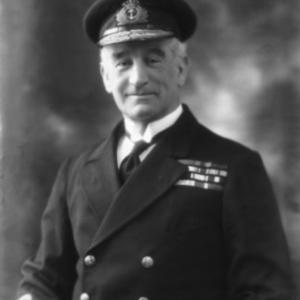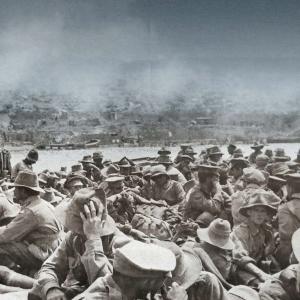
WW1 Gauntlet Dagger
The Anglo-French gauntlet dagger was a grim and ingenious response to the close-quarters savagery of the First World War trenches. It combined a protective metal gauntlet with a short, stabbing blade, turning the soldier’s forearm into both shield and weapon. The weapon’s appearance was crude but purposeful: a sheet-steel cuff fitted with a narrow dagger blade designed for a single, decisive thrust. Its shape and intent reflected the brutal intimacy of trench fighting, where soldiers often met the enemy face to face in dark, confined spaces.
In the mud and chaos of the Western Front, standard weapons like rifles and bayonets were too long and unwieldy for the tight confines of a trench. Soldiers needed tools that were fast, quiet, and deadly at arm’s length. The gauntlet dagger answered that need. It allowed a man to protect his hand from wire and splinters while striking quickly at an opponent. The blade, small and stiff, could drive deep between ribs or through a throat in a single motion. Such weapons were ideal for trench raids—nighttime assaults intended to capture prisoners, gather intelligence, or disrupt enemy lines—and they embodied the desperate improvisation that defined that type of warfare.
Unlike the rifles and bayonets issued in the millions, the gauntlet dagger was never a standardized weapon. It was usually the product of small-scale or improvised manufacture, fashioned by unit armorers or local workshops. Some were made from shortened bayonets or scavenged steel, others from whatever metal could be pressed and welded into shape. While some modern descriptions speak of folded or forged steel blades, surviving examples suggest that most originals were made simply and quickly, prioritizing function over finish. Each piece was unique, showing the marks of handwork rather than mass production.
Because of their improvised nature, few authentic examples have survived. Many were discarded or destroyed after the war, and those that remained were often corroded beyond repair. Museums today hold only a handful of verified specimens, and they are regarded as rare artifacts of trench ingenuity. A few have surfaced in private collections or at auction, but genuine pieces are difficult to authenticate due to the number of reproductions that appeared in later decades.
The gauntlet dagger’s role was always limited. It offered protection and offensive capability in the tightest spaces but lacked reach and versatility. Outside the trench, it was cumbersome, and in open fighting it could not match the effectiveness of standard-issue arms. Yet within its narrow purpose it was brutally efficient—a weapon for a soldier who had to fight hand-to-hand in the dark, where silence and speed meant survival.










